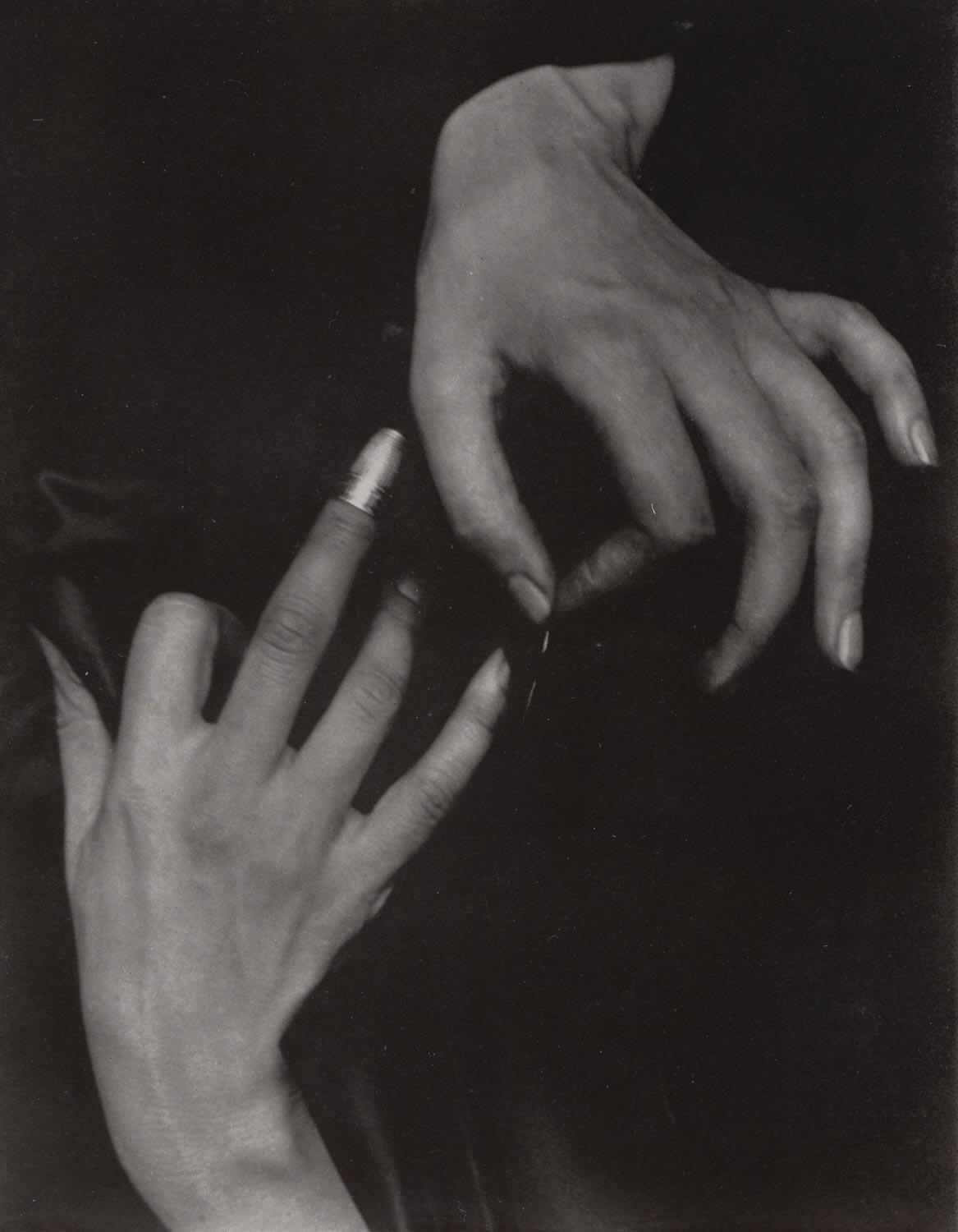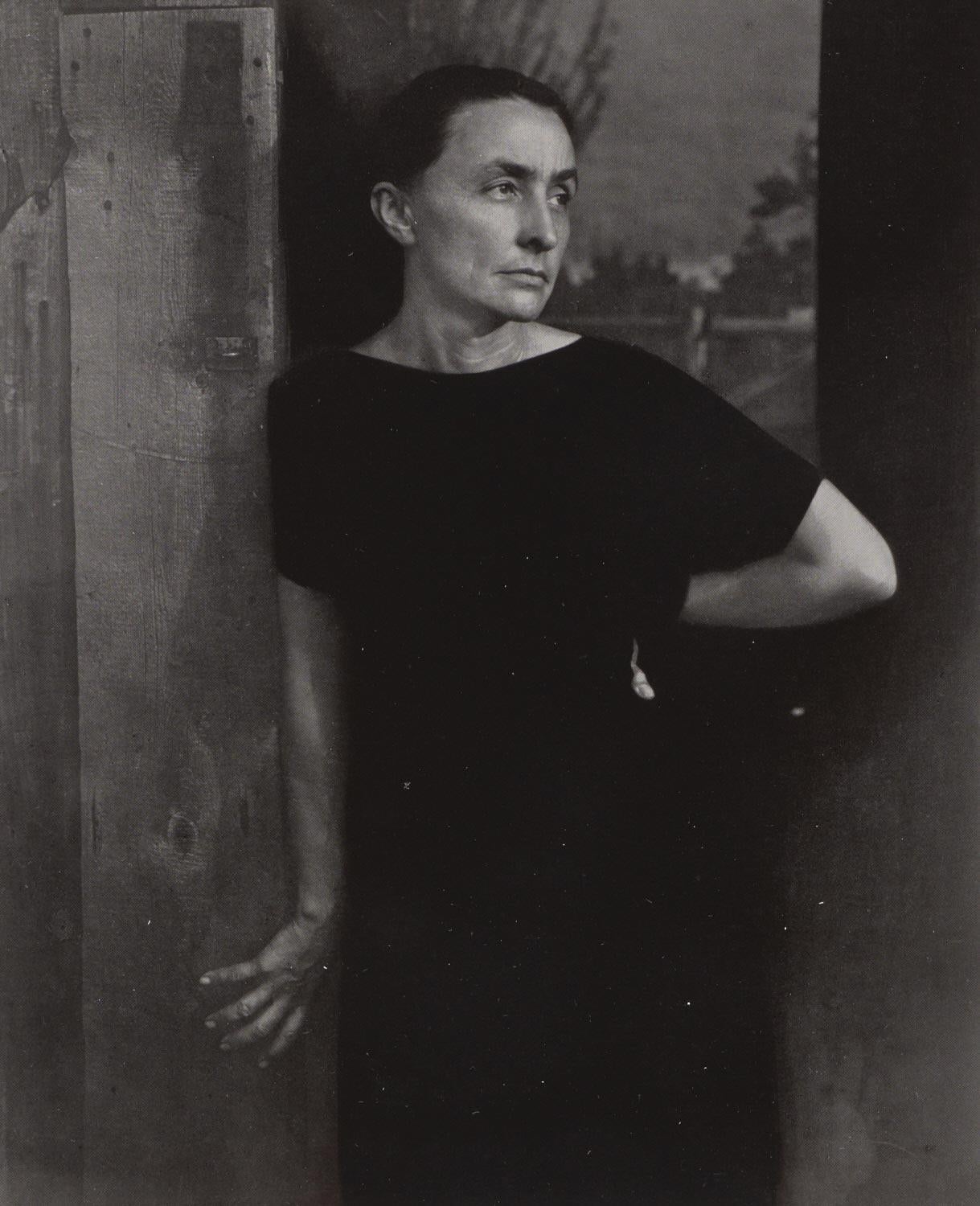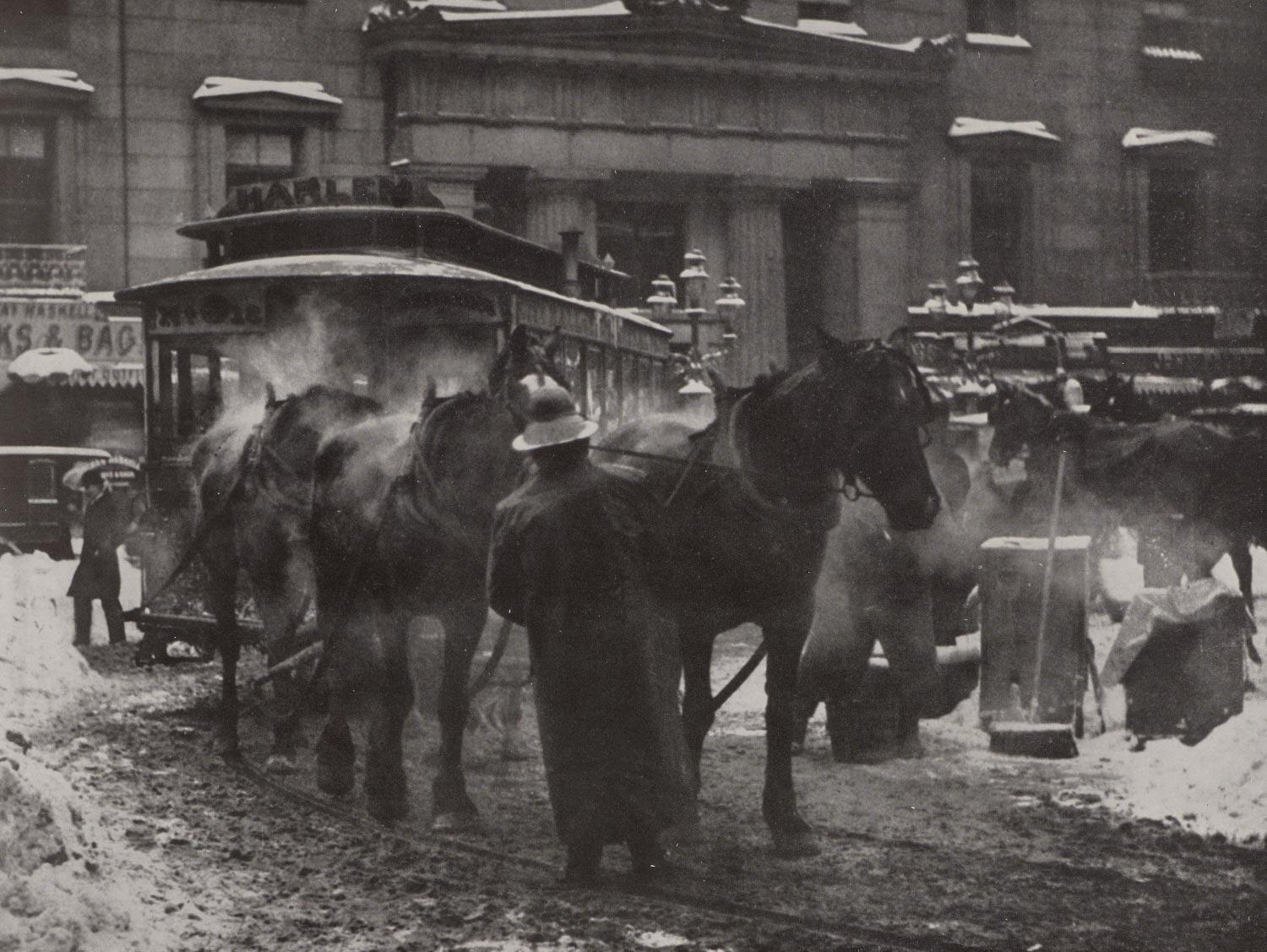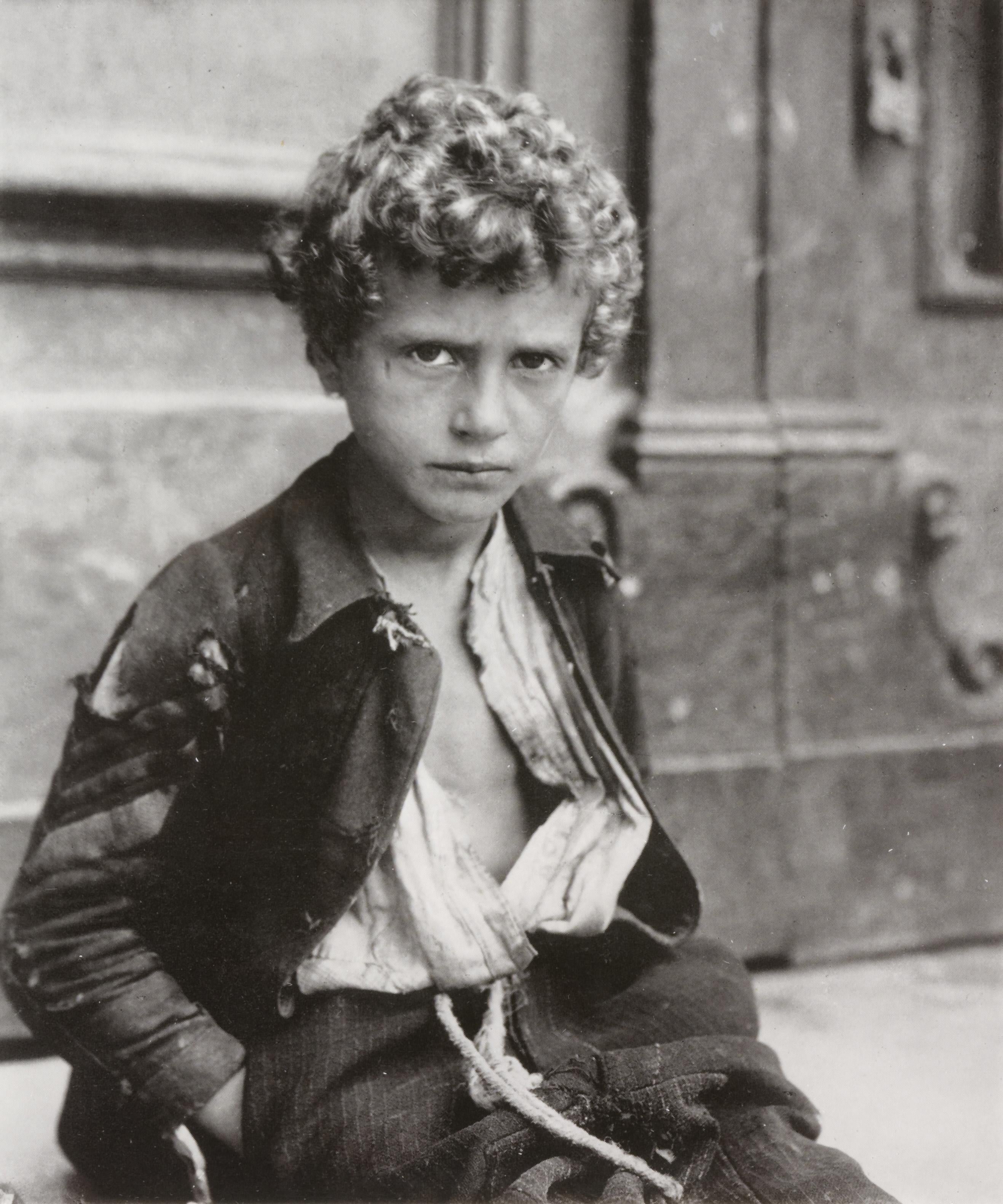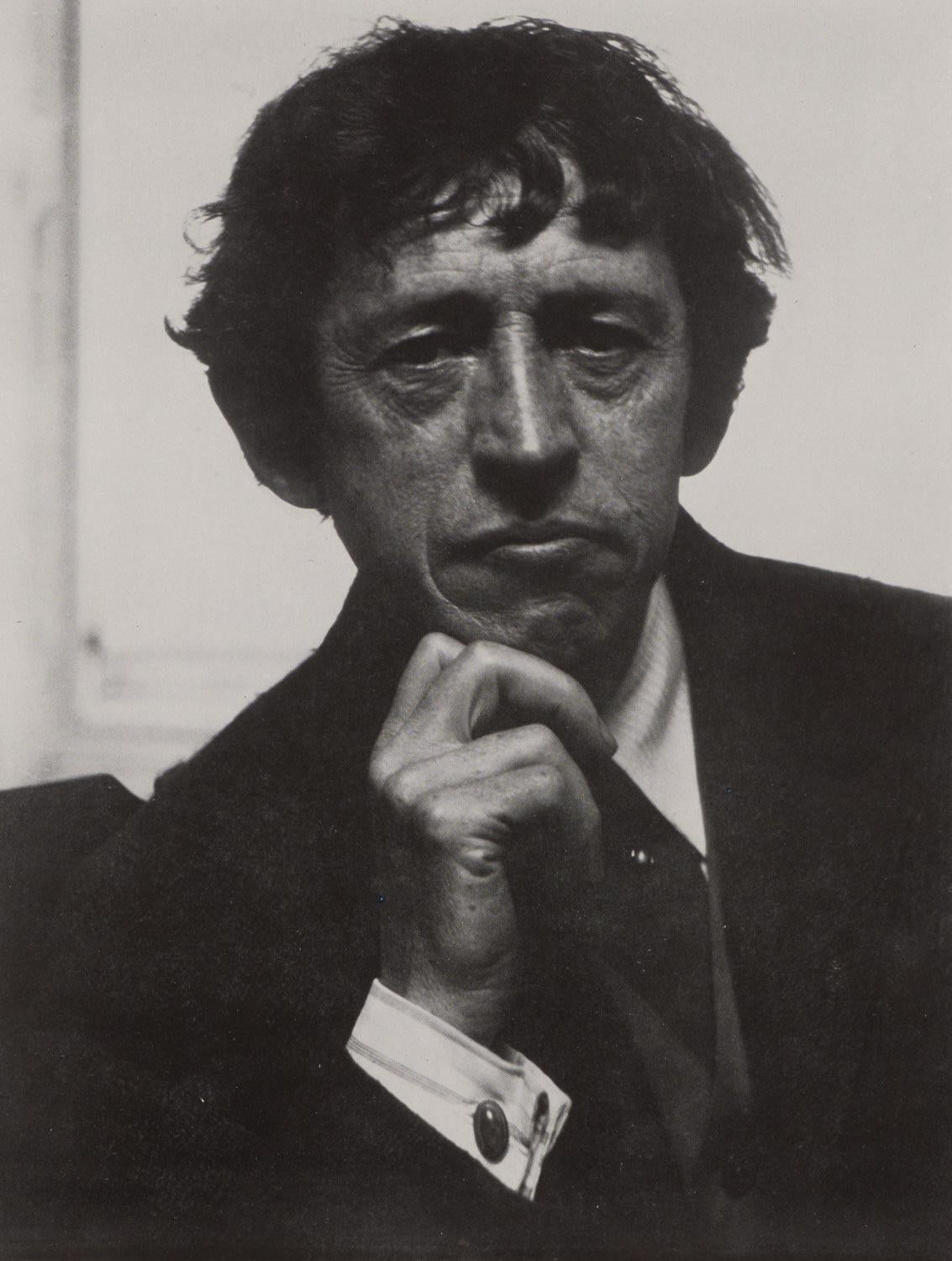Items Similar to Stieglitz, Hands, Dorothy Norman, Alfred Stieglitz Memorial Portfolio (after)
Want more images or videos?
Request additional images or videos from the seller
1 of 9
Stieglitz, Hands, Dorothy Norman, Alfred Stieglitz Memorial Portfolio (after)1947
1947
About the Item
Halftone photographic print on gloss photographic paper. Unsigned and unnumbered, as issued. Good Condition; never framed or matted. Notes: From the folio, Alfred Stieglitz Memorial Portfolio 1864-1946, 1947. Published by Twice a Year Press, New York; printed by Lakeside Press, Chicago, 1947. Excepted from the folio, edition limited to fifteen-hundred copies. INTRODUCTORY NOTE-AMERICA WITHOUT ALFRED STIEGLITZ, Twice during his life, and now again after his death, the compelling and magnetic personality of Alfred Stieglitz has evoked spontaneous group tribute. In America and Alfred Stieglitz, as in the earlier and memorable No. 47 of Camera Work, the elusive question: What is the meaning of Stieglitz? was posed. In both volumes—as in so much other writing about him-it was answered in as many ways as there were artists, writers, composers-individuals in all fields of endeavor attempting to "explain" him. Indeed, the meaning and influence of Stieglitz as artist, patron, teacher, inspirer, friend, critic, were so vastly complex, it may be that no single estimate of him could at any point fully cover all facets of his character. Thus it may be both inevitable and particularly fitting that a memorial volume to him should also be in the form of a group tribute the more so since he himself so firmly believed that no matter how diligently one attempts to evaluate the meaning of any individual or work of art (or life itself for that matter) there can never be one single interpretation, one single estimate that can be viewed as absolute or final. That tribute should be paid by a group is fitting for still another reason, for although Stieglitz was ostensibly a great individualist, no one believed more firmly than did he in the idea that individuals dedicated to the same ends should come together and work together for a common purpose each leaving the other free to say his say without interference. In reading over the tributes now published in this portfolio as they have been received, I have felt what I always feel about any writing concerning Stieglitz that is born of deep feeling: That those who are moved to write about him invariably do so more from a desire to share a sense of wonder about him, than actually to "explain" his meaning or importance. This again is as it should be, for Stieglitz's entire life was dedicated to the sense of wonder-his own, as well as that of others. There were those who scoffed at the title "America and Alfred Stieglitz" when the volume bearing that name first appeared (the inference having been that those responsible for it overestimated Stinglitz's importance). The question now is-What of America without Alfred Stieglitz? What has gone out of our lives now that Stieglitz is no longer here? For certainly we have suffered a great and abiding loss in his death. And although America is infinitely richer for his having lived, it is not quite the same now that he is gone. Certainly there is no one in this country now standing up for the arts in precisely the manner in which Stieglitz stood up for them. There is no one now fighting as he fought to keep art from being regarded as a commodity. There is no gallery in America at this moment whose spirit and approach are even remotely related to the spirit of "291," the Intimate Gallery, An American Place. Wherever Stieglitz functioned there was a sacred feeling about the artist, about the work of art, about the cleanliness of walls, about those seeking art. There is now no one photographing as he photographed; no one speaking as he spoke. America without Alfred Stieglitz is indeed changed subtly but incontrovertibly changed. This portfolio is published to re-evoke the tradition in which he lived. It is issued as a labor of love, in tribute to a great and lovable man, in deep sadness that he is no longer alive and in dedication to the principles for which he stood, and the spirit in which he worked. The tributes received have been printed without editing, except for corrections of important errors of fact. They express the views of their authors; they are inevitably as much portraits of their authors as of their subject. I have included excerpts from a few letters received after Stieglitz's death, which, although not written for publication, seem somehow to belong; various pieces written about Stieglitz some time ago by those who would surely have contributed related tributes now, had they not died within recent years; several articles meant for this portfolio but already published elsewhere; a cross-section of obituaries and memorial pieces from leading newspapers and journals; a few tributes received after the portfolio was planned, at the request of their authors. As for the decision to include reproductions of Stieglitz's photographs: As with all attempts to reproduce his work, I have felt a certain degree of hesitation. Although he disliked very much having his work reproduced, he would, in general, permit reproductions to be published when requested. I have attempted to procure the best approximation of his work that could be made in America at this time. To those who believe it
unfitting to reproduce Stieglitz's work at all, or that one should wait to do so until conditions are perfect, I can only state this: Stieglitz was indeed a great perfectionist, but he spoke out vigorously against making such a fetish of perfectionism that one might finally do nothing whatsoever in behalf of the very things about which one claims to care the most. Years ago he wrote to someone who asked to reproduce his work: "My photographs do not lend themselves to reproduction. The very qualities that give them their life would be completely lost in reproduction. The quality of touch in its deepest living sense is inherent in my photographs. When that sense of touch is lost, the heartbeat of the photograph is extinct. In the reproduction it would become extinct dead. My interest is in the living. That is why cannot give permission to reproduce my photographs." He wrote this, despite giving permission to reproduce his work many times both before and after the statement was written. At another time he wrote: "As for reproductions, I feel that if the spirit of the original is lost, nothing is preserved. My work might be reproduced if properly interpreted, that is, the spirit might be preserved. Of course, some of the things can't possibly be reproduced for obvious reasons. Above all, the reproductions must have a clean feeling— an absolute integrity of their own."
Aware of these feelings and despite the paradox that he so often granted permission to reproduce his work in spite of them—wish to make it clear that the reproductions herewith included are in no sense offered as substitutes for Stieglitz originals. They are published rather as a reminder of the originals themselves. In concentrating so intently upon the fostering of other artists, Stieglitz paid far too little attention to seeing that his own work might be better known to the general public. It is high time that this situation was remedied. To print a mere twenty reproductions, in the light of the enormous scope of Stieglitz's work, is also not to suggest that this portfolio represents a true "cross-section" of his work. All that could be done under the present circumstances was to choose a few representative prints, from various periods, that might possibly be reproduced without losing too much of the form of the originals, and thereby show at least the general direction in which Stieglitz's work evolved even though obviously only in a cursory-and therefore perhaps misleading-fashion. But if the inclusion of these few reproductions should do nothing more than lead those who see them to the originals, their publication may be justified. In the final analysis, in paying tribute to Stieglitz one cannot help but wish-first and foremost-to enable his contribution as an artist to speak for itself. For his contribution as photographer will live on—as symbol and portrait of all that he stood for, envisioned, created, expressed-quite independently of whatever else he fostered and inspired. And that contribution is one of the greatest in the world of art in our time. —Dorothy Norman
ALFRED STIEGLITZ (1864-1946) was an American photographer and modern art promoter who was instrumental over his 50-year career in making photography an accepted art form. In addition to his photography, Stieglitz was known for the New York art galleries that he ran in the early part of the 20th century, where he introduced many avant-garde European artists to the U.S. He was married to painter Georgia O'Keeffe. Few individuals have exerted as strong an influence on 20th-century American art and culture as the photographer and art dealer Alfred Stieglitz. Born in Hoboken, New Jersey, in 1864 during the Civil War, Stieglitz lived until 1946. He began to photograph while a student in Berlin in the 1880s and studied with the renowned photochemist Hermann Wilhelm Vogel. On his return to the United States in 1890, he began to advocate that photography should be treated as an art. He wrote many articles arguing his cause, edited the periodicals Camera Notes (1897–1902) and Camera Work (1903–1917), and in 1902 formed the Photo-Secession, an organization of photographers committed to establishing the artistic merit of photography. Stieglitz photographed New York for more than 25 years, portraying its streets, parks, and newly emerging skyscrapers; its horse-drawn carriages, trolleys, trains, and ferry boats; as well as some of its people. In the late 1910s and early 1920s, he also focused his camera on the landscape around his summer home in Lake George, New York. In 1918 Stieglitz became consumed with photographing his future wife, the artist Georgia O’Keeffe. For many years he had wanted to make an extended photographic portrait—he called it a composite portrait—in which he would study one person over a long period. Over the next 19 years he made more than 330 finished portraits of her. Beginning in 1922 and continuing throughout the 1920s, he also became preoccupied with another subject, clouds, making more than 300 finished studies of them. Stieglitz witnessed some of the most profound changes this country has ever experienced: two world wars, the Great Depression, and the growth of America from a rural, agricultural nation to an industrialized and cultural superpower. But, more significantly, he also helped to effect some of these transformations. Through his New York galleries—the Little Galleries of the Photo-Secession at 291 Fifth Avenue, which he directed from 1905 to 1917; The Intimate Gallery, 1925–1929; and An American Place, 1929–1946—he introduced modern European art to this country, organizing the first exhibitions in America of work by Pablo Picasso, Henri Matisse, Georges Braque, and Paul Cézanne, among others. In addition, he was one of the first to champion and support American modernist artists such as Georgia O’Keeffe, Arthur Dove, John Marin, Marsden Hartley, and Charles Demuth. Photography was always of central importance to Stieglitz: not only was it the medium he employed to express himself, but, more fundamentally, it was the touchstone he used to evaluate all art. Just as it is apparent today that computers and digital technology will dominate not only our lives but also our thinking in this century, so too did Stieglitz realize, long before many of his contemporaries, that photography would be a major cultural force in the 20th century. Fascinated with what he called “the idea of photography,” Stieglitz foresaw that it would revolutionize all aspects of the way we learn and communicate and that it would profoundly alter all of the arts. Stieglitz’s own photographs were central to his understanding of the medium: they were the instruments he used to plumb both its expressive potential and its relationship to the other arts. When he began to photograph in the early 1880s, the medium was barely 40 years old. Complicated and cumbersome and employed primarily by professionals, photography was seen by most as an objective tool and utilized for its descriptive and recording capabilities. By the time ill health forced Stieglitz to stop photographing in 1937, photography and the public’s perception of it had changed dramatically, thanks in large part to his efforts. Through the publications he edited, including Camera Notes, Camera Work, and 291; through the exhibitions he organized; and through his own lucid and insightful photographs, Stieglitz had conclusively demonstrated the expressive power of the medium.
- Creation Year:1947
- Dimensions:Height: 16 in (40.64 cm)Width: 12 in (30.48 cm)
- Medium:
- Movement & Style:
- After:Alfred Stieglitz (1864-1946, American)
- Period:
- Condition:
- Gallery Location:Auburn Hills, MI
- Reference Number:1stDibs: LU1465214273462
About the Seller
4.9
Platinum Seller
These expertly vetted sellers are 1stDibs' most experienced sellers and are rated highest by our customers.
Established in 2002
1stDibs seller since 2021
857 sales on 1stDibs
Typical response time: <1 hour
- ShippingRetrieving quote...Ships From: Auburn Hills, MI
- Return PolicyA return for this item may be initiated within 1 day of delivery.
Auctions on 1stDibs
Our timed auctions are an opportunity to bid on extraordinary design. We do not charge a Buyer's Premium and shipping is facilitated by 1stDibs and/or the seller. Plus, all auction purchases are covered by our comprehensive Buyer Protection. Learn More
More From This SellerView All
- Stieglitz, John Marin, Alfred Stieglitz Memorial Portfolio (after)By Alfred StieglitzLocated in Auburn Hills, MIHalftone photographic print on gloss photographic paper. Unsigned and unnumbered, as issued. Good Condition; never framed or matted. Notes: From the folio, Alfred Stieglitz Memorial ...Category
1940s Modern Black and White Photography
MaterialsLithograph
- Stieglitz, Venetian Boy, Alfred Stieglitz Memorial Portfolio (after)By Alfred StieglitzLocated in Auburn Hills, MIHalftone photographic print on gloss photographic paper. Unsigned and unnumbered, as issued. Good Condition; never framed or matted. Notes: From the folio, Alfred Stieglitz Memorial ...Category
1940s Modern Black and White Photography
MaterialsLithograph
- Stieglitz, The Terminal, Alfred Stieglitz Memorial Portfolio (after)By Alfred StieglitzLocated in Auburn Hills, MIHalftone photographic print on gloss photographic paper. Unsigned and unnumbered, as issued. Good Condition; never framed or matted. Notes: From the folio, Alfred Stieglitz Memorial ...Category
1940s Modern Black and White Photography
MaterialsLithograph
- Stieglitz, Georgia O'Keeffe, Alfred Stieglitz Memorial Portfolio (after)By Alfred StieglitzLocated in Auburn Hills, MIHalftone photographic print on gloss photographic paper. Unsigned and unnumbered, as issued. Good Condition; never framed or matted. Notes: From the folio, Alfred Stieglitz Memorial ...Category
1940s Modern Black and White Photography
MaterialsLithograph
- Stieglitz, The Steerage, Alfred Stieglitz Memorial Portfolio (after)By Alfred StieglitzLocated in Auburn Hills, MIHalftone photographic print on gloss photographic paper. Unsigned and unnumbered, as issued. Good Condition; never framed or matted. Notes: From the folio, Alfred Stieglitz Memorial ...Category
1940s Modern Black and White Photography
MaterialsLithograph
- Stieglitz, O'Keeffe Hands w/Thimble, Alfred Stieglitz Memorial Portfolio (after)By Alfred StieglitzLocated in Auburn Hills, MIHalftone photographic print on gloss photographic paper. Unsigned and unnumbered, as issued. Good Condition; never framed or matted. Notes: From the folio, Alfred Stieglitz Memorial ...Category
1940s Modern Black and White Photography
MaterialsLithograph
You May Also Like
- Justine and the Victorian PunksBy Colette LumiereLocated in New York, NYComplete set of 4 available for $1000Category
1970s Figurative Photography
MaterialsLithograph
- Vintage Photograph of a Modern SculptorLocated in Rochester, NYVintage photograph of an unknown abstract sculptor. In metal frame.Category
Mid-20th Century Modern Black and White Photography
MaterialsSilver Gelatin
- New York City by Night, circa 1950, Silver Gelatin B and W Photography FramedLocated in Atlanta, GAAn original silver gelatin black and white photograph with framing. New York City by night, circa 1950. Features: Original Silver Gelatin Print Photography framed. Press Photography....Category
1950s Modern Black and White Photography
MaterialsSilver Gelatin
- USS Roosevelt, New York Navy Day 1945, Silver Gelatin B and W Photography FramedBy Associated PressLocated in Atlanta, GAAn original silver gelatin black and white photograph by Associated Press Photo. The USS Roosevelt aircraft carriers on the Hudson River, New York, during Navy Day...Category
1940s Modern Black and White Photography
MaterialsSilver Gelatin
- Enter the Temple, Elephant Island, Bombay, India, 1988By Victoria GoldmanLocated in Hudson, NYEach year, Robin Rice celebrates a Salon style exhibition to showcase her gallery artists and invite new ones. With Robin’s extensive experience as a gallery curator, all Robin Rice...Category
1990s Modern Figurative Photography
MaterialsSilver Gelatin
- TyrfingLocated in New York, NYBlack and white photography.Category
2010s Modern Black and White Photography
MaterialsPhotographic Film, Archival Ink, Archival Paper, Photographic Paper, Pho...
